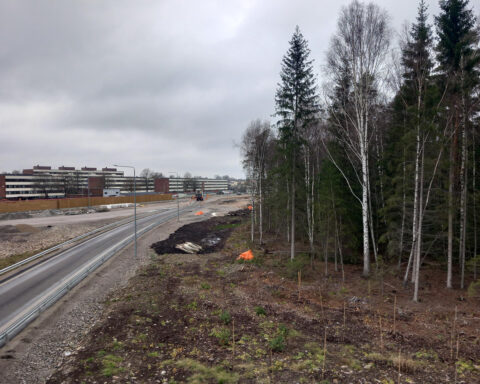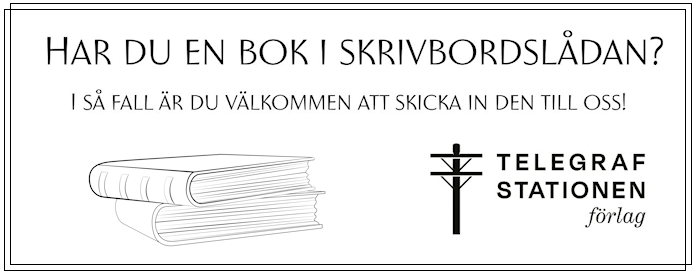
DECENTRALISATION. Technologies such as 3D printing and Blockchain represent a major trend with growing importance. This is the trend towards technology being used in a distributed, collaborative way, rather than being centrally controlled.
This text was originally published via Waldemar Ingdahls blog
In 2015, this trend was still in its infancy, but could be seen through the ongoing evolution of the Internet through the “Internet of Things” to the “Internet of Industry”. Another name for the Internet of Industry, common in Germany, is “Industry 4.0”.
In this vision, people will be able to study designs, modify them, download them onto nearby 3D printers, and thereby create new goods. This will happen with minimal legal and contractual overhead, due to Blockchain.
These printers won’t necessarily be in people’s homes but will be accessible in the local neighbourhood. For example, in late 2013 the French La Poste launched an experimental trial of a new 3D printing service at a number of post offices in Boulogne-Billancourt and Paris. Items expected to be 3D printed as part of this trial include jewellery, cardholders, and smartphone cases, along with any other item whose design is contained on files brought by users to the post office.
As a comparison for the present status of 3D printing, we’re about the status of the IT industry in the 1970s. The field has its share of enthusiasts and pioneers, along with serious researchers doing serious research. However the field still lacks successful business models, powerful corporations focused on the subject, and full stable infrastructure. These changes lie ahead, building on what the Internet already provides.
The real opportunity here is not only to increase production but to personalize production. Smarter production methods will make better use of resources — improving efficiency and reducing waste — but will also enable the development of new types of product.
3D printers and the wider Industrial Internet are particularly good — even today — at building prototypes. 3D printing makes the process simpler, with improved interfaces to tools for CAD (Computer-Aided Design) and CAM (Computer-Aided Manufacturing). Because prototypes are less expensive to build, there are more opportunities for experimentation and innovation.
This technology will enable an abundance of ideas. It simplifies the flow of data through the production chain, improving communications so that ideas can be applied more easily.
Up till now, the Internet has been great at distributing and levelling out ideas, regardless of where these ideas originated. In other words, it has promoted an equality of ideas. But from now on, these ideas can turn more easily into actual products, used by more people. If anything, this will encourage even more ideas to circulate.
This poses an important political choice. Do we want to strengthen only the present types of production, with centralized corporations having a leading role? Or do we want to take advantage of the Internet of Things and the Internet of Industry to promote new types of collaborative production networks?
Inevitably, there are many uncertainties in how these technologies will develop, so a detailed roadmap is hard to foresee. However, we can already identify some hurdles ahead, which deserve our attention.
One of these hurdles is the current patenting system, highlighted as being in need of reform in an editorial and an article of a recent issue of The Economist magazine. Patent reform has been discussed for quite some time, and it will probably take place by the 2020s. Otherwise, it will be too difficult to innovate and to use technologies that are subject to long-lived patents with a scope that is hard to ascertain.
In fact, the patenting system is already an inconvenience, not only to small entrepreneurs but also to giant corporations such as Siemens that are trying to apply these technologies today. This is because of the excessively complicated web of sticky patents, which prevents companies from streamlining their chains of production.
The 2030s should see the flourishing of the Blockchain technology, opening up new ways of organizing relationships. The need for new relationships applies particularly in less affluent parts of the world, where it is often difficult to conduct even small transactions, due to lack of infrastructure.
It’s similar to the way that the electronic cash systems like M-Pesa flourished in Kenya, where many people were unable to obtain traditional forms of the bank account. That’s why they adopted, instead, mobile phones and a digital currency for financial transactions.
The Blockchain technology takes the same idea further. It provides a registry, acting as a digital municipal authority, verifying people’s identity, in a uniform way. The Bitcoin currency can be seen as a “killer app” for Blockchain, promoting the adoption of Blockchain. It is an encrypted, entrusted registry of transactions.
Blockchain becomes particularly important when the usage of decentralized technologies grows. Without Blockchain, the administrative and legal costs of transactions would be too high. Blockchain will prevent the need for any “lawyer apocalypse” in the 2030s.
In the lead up to 2040, we can expect new combinations of 3D printing, material science, and (perhaps) the nanotech molecular machines described by Eric Drexler, leading to significant advances, with their own new methods of industrial production. It remains to be seen whether individuals will prefer individually customized items, or the output of mega-scale automated factories that operate without any human involvement — factories known as “dark factories”.
The changes described are going to require new types of skill, which will be important for the operation of the new technologies. Further, there will be changes in how business is done. Today’s so-called “sharing economy” is still dominated by corporations like Uber and AirBnB. The corporations involved are making profits by loosening the legal implications of the employment market.
However, the true sharing economy of the future will operate without corporations taking these intermediary roles. Software technologies will operate without the need for corporations to oversee the resulting networks. In some cases, cooperatives will take the place of the corporations. Other cases may involve federations. Blockchain’s ability to verify identities will come into its own.
As a result, different topics will need to be covered in educational courses. We’ll also see new kinds of businesses.
Businesses that rely on doing the same thing again and again will face extra difficulties. They’ll fall behind competitors that take advantage of the rapid innovation enabled by Industry 4.0. That innovation reviews the constant flows of feedback data in the production systems.
The feedback system of today — for example, for both the driver and the passenger in Uber — can be developed in more interesting ways with more sophisticated systems. Full transparency of the rating system will deliver greater insight. Similar transparency of the pricing system will lead to yet more innovation.
Another important implication is the need for governments (such as the EU) to look at “digital sustainability”. This is the concept that ways of using and analyzing data should avoid practices that would only be accepted by users for a short period of time. If users reach the view that their data is being manipulated in ways they didn’t expect and don’t like, these practices will come under social and then legal pressure: they will be unsustainable. Digital sustainability involves the visible protection of the rights of everyone concerned with data flows.
This topic of digital sustainability is going to feature increasingly in public discussion in the years ahead. It’s a relatively new term, read more about it in Characteristics of Digital Sustainability.
The concept can also be seen as a development of Eric Schmidt’s notion “not crossing the creepy line”. In 2010, the then-CEO of Google stated in an interview that “Google policy is to get right up to the creepy line and not cross it”. If Google’s users think the company has overstepped that line, and is intruding too closely on private and personal matters, the company will suffer a backlash. These methods of analysis would be unsustainable (though they may have short-term dividends).
Many current business models are probably unsustainable in the same way: they accumulate users with free services, collect their data, and hope to rely on user ignorance as they manipulate that data in ways the users don’t understand. These business models depend on monetizing insight from that data analysis. But as people become more aware of what is happening, they may become apprehensive, and the business will fail.
This highlights the need for increased transparency, and for new ways of addressing consumer fears.
The EU is already trying to address this topic. The EU Council of Ministers and the EU Parliament are working on a major bill for data protection. One idea discussed is a simple concept of traffic lights, to supplement the lengthy EULA contracts which consumers presently rarely read when they sign up for an online service. A red light would signal to users that they should take a careful look at what an agreement allows an organization to do with their data. An amber light recommends that users should inform themselves. A green light is a signal that users can safely click the “I agree” button.
Without this kind of proactive reform of EULAs, we can anticipate “the big EULA breakdown” in the 2020s. This breakdown will be accelerated by the massive forthcoming data flows from the Internet of Things and billions of sensors.
Without digital sustainability, we face the prospect of a “data deluge” in which people have no clear understanding of what will happen to all the data generated. A data deluge will magnify pressures towards the “tragedy of the commons”, where individuals acting independently and rationally according to self-interest behave contrary to the best interests of the whole group by depleting some common resource (read further in Anarchy beyond socialism and capitalism).
Some companies are already becoming wary of releasing their data with open access. They’re not seeing any benefit from pumping their data into the commons in that way. In contrast, the original spirit of the Internet can be described as the “comedy of the commons”: more users mean there’s more for everyone. That’s an important characteristic to keep as the Internet evolves.
Readers, and the organizations they represent, need to give serious thought to their role in building up decentralized technologies. There are various different ways to achieve services that are decentralized and secure. It’s probably too early for politicians to discuss these topics at length at the present time, but the discussion will increase in the 2020s.
It’s also worth exploring the differences of emphasis of the European “Industry 4.0” initiative and the work of the American Industrial Internet Consortium.
A broader question is: How can we use “the force of the many” in the best way? This has huge implications for our society and our economy. Stated in other words: how can we avoid the madness of the crowds, and turn it into the wisdom of the crowds? Rather than a “tragedy of the commons”, what mechanisms might enable a “comedy of the commons”?

info@opulens.se














